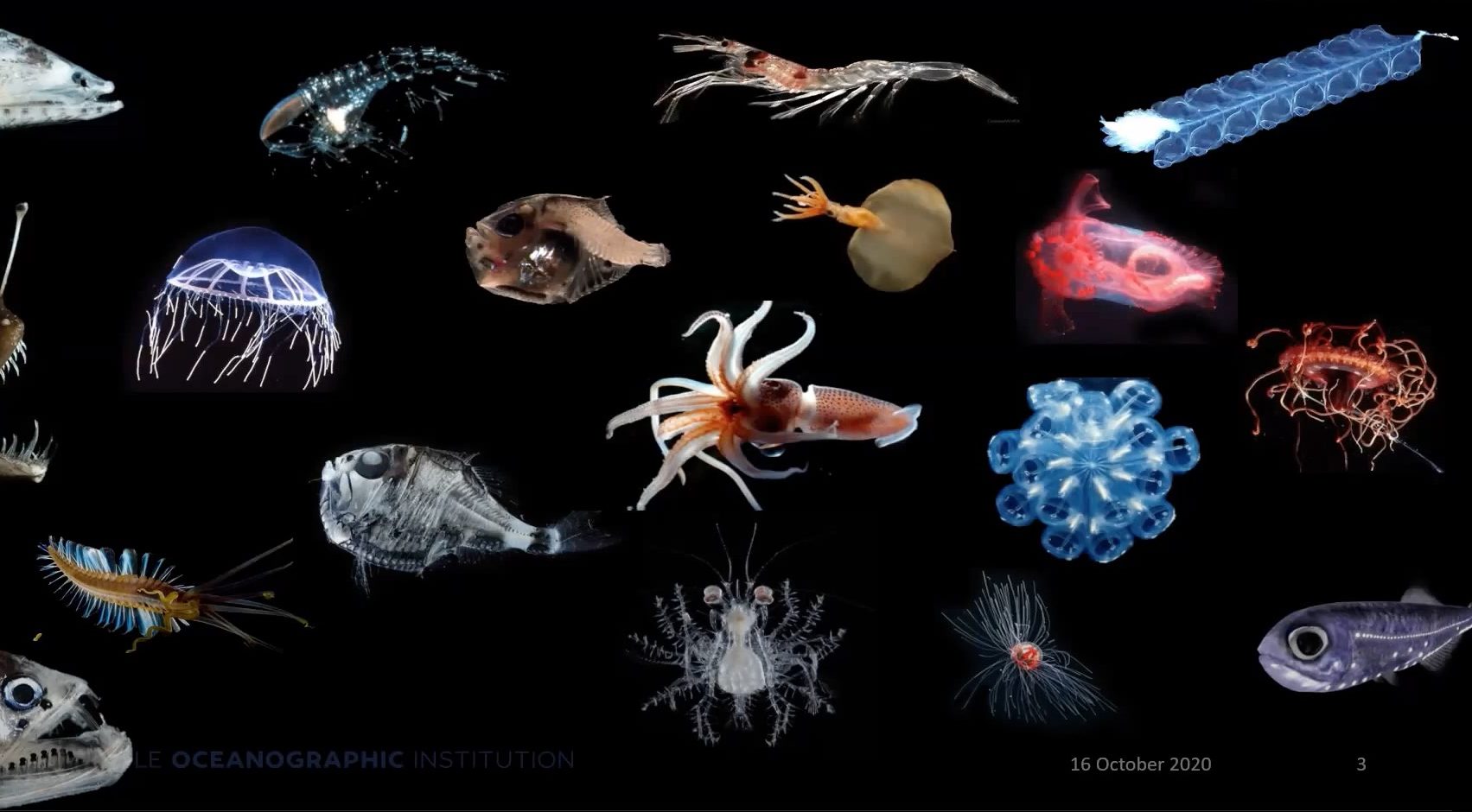Update: OTZ Biomass February 17, 2021

What is biomass, and why is it so important for understanding the ocean twilight zone?
In order to fully understand the ocean twilight zone ecosystem, scientists will need to know how much overall life, or “biomass”, it can support. Establishing this metric is a key part of calculating the zone’s impact on oceanwide food webs, deep-water fisheries, and even global climate. Getting an accurate sense of this number is a major challenge, however. Traditional net tows provide a skewed sampling of life in the twilight zone, since some species can easily avoid trawling nets, while others-like gelatinous salps and jellyfish-simply break apart when the nets are pulled in. For this reason, the OTZ team uses a suite of complementary methods to measure biomass. In addition to net tows, our scientists are developing new methods of harnessing shipboard acoustics; building miniature, submerged acoustic devices; gathering photographic and holographic images, and analyzing environmental DNA (eDNA) to find genetic material of animals they may have missed using other methods. The team's work so far has shown that existing estimates of biomass could be too high-while a 2014 study suggests that there are 10 times more fish in the twilight zone than previously estimated, new research has found that may only be 2-3 times more.
How can machine learning help scientists discover the twilight zone's true biomass?
In the past two years, the instruments developed by the OTZ team have collected a vast amount of data on the ocean twilight zone. Together, the Deep-See, Mesobot, and ISIIS platforms have gathered nearly 100 terabytes of acoustic data and more than half a million images and holograms of mesopelagic life. In order to process this much information, however—and spot patterns that could answer key scientific questions—the team has also developed new machine learning techniques. These tools let researchers automate large parts of their analysis and significantly reduce the time needed to extract meaningful information. Instead of taking an individual researcher several minutes to identify organisms in a holographic image, computer-aided techniques take only a few seconds. Similar methods let scientists analyze huge amounts of acoustic data in near real time while at sea, allowing them to adapt their sampling approaches based on what they are seeing. These tools will ultimately provide our team and other research groups a better and more detailed view of the mesopelagic’s structure and estimated biomass.






